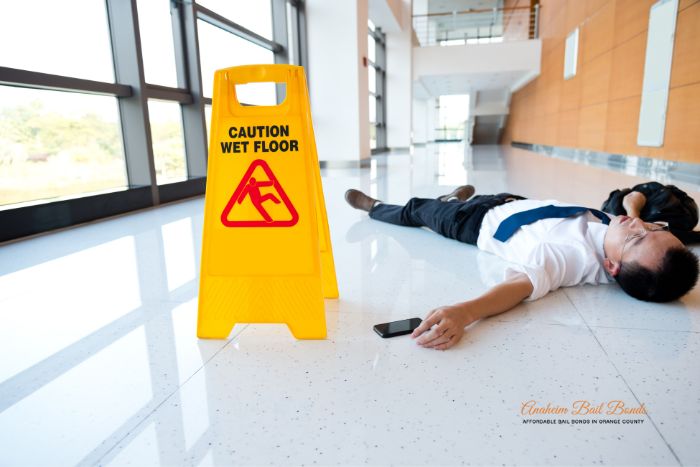
28 Nov Who is Liable When You’re Injured in a Slip and Fall Accident
Slip and fall accidents happen. While they are sometimes the result of simple clumsiness on your part, in most cases, a slip-and-fall accident has a specific trigger. Examples of a trigger include a piece of torn carpeting that catches your toe, a piece of ice laying on a linoleum floor, or someone failing to pick up a product that you don’t see and trip over it.
Whenever you are injured in a slip and fall injury, there is always a great deal of debate about who is financially responsible for the incident.
In a perfect world, your health insurance company would handle all the bills connected to the slip and fall incident without any question.
Unfortunately, we don’t live in a perfect world. The reality is that as soon as your insurance company learns that your injury was sustained during a slip and fall incident, they will start trying to pin the blame and the financial responsibility on the property owners.
California has something called duty of care which is designed to provide anyone who is harmed in a slip and fall incident while they are on another person’s property. When it comes to injuries, the duty of care lands squarely on the shoulders of whoever leases, owns, or is in control of the property where the incident took place.
In some cases, the property owner’s insurance may calmly accept that their client was responsible for the incident and will pay out the claim without any hesitation. In other cases, the insurance company may balk, forcing you to create a civil lawsuit and use the law to get the financial compensation you feel you’re entitled to.
When you file a civil lawsuit in a slip-and-fall case, there are a few things you will need to prove before you will win your case. There are four criteria that must be met before the judge will side with you against the plaintiff.
- You must prove that the plaintiff was in control of the property and therefore legally responsible
- That the plaintiff was negligent in their care of the property and that you were injured as a direct result of this negligence
- That your injuries were sustained as a direct result of the slip and fall incident
- Had it not been for the plaintiff’s negligence, you would not have been injured
Proving that the defendant was negligent isn’t always as easy as you might suspect. You can’t simply file a civil case against them and expect that the court will side with you. The judge is going to want to see some evidence that the defendant has a history of negligence and that they understood that their failure to keep the property safe could result in a slip-and-fall accident.
For example, if you tripped and fell because a stair wasn’t properly repaired and there was no evidence that the property owner had attempted to make the stair safe, you will probably win the case. However, if you tripped over the stair and were hurt because your shoelaces weren’t properly tied, you’ll probably lose your slip and fall case.
Another example would be if a warning sign was put out when a store manager washed the floor. If the signs are out and you ignore them, walk across the wet floor, and are hurt in a fall, you’re liable for the injuries. However, if the store manager failed to put out the wet floor signs, they will be liable for your injuries.
Don’t expect to be able to retire on what you make from your slip-and-fall case. In most situations, you’ll get little more than your medical bills and lost wages in the settlement. The only time large punitive settlements are awarded in slip-and-fall cases is when you’re able to prove that the person in charge of the property was grossly negligent.
